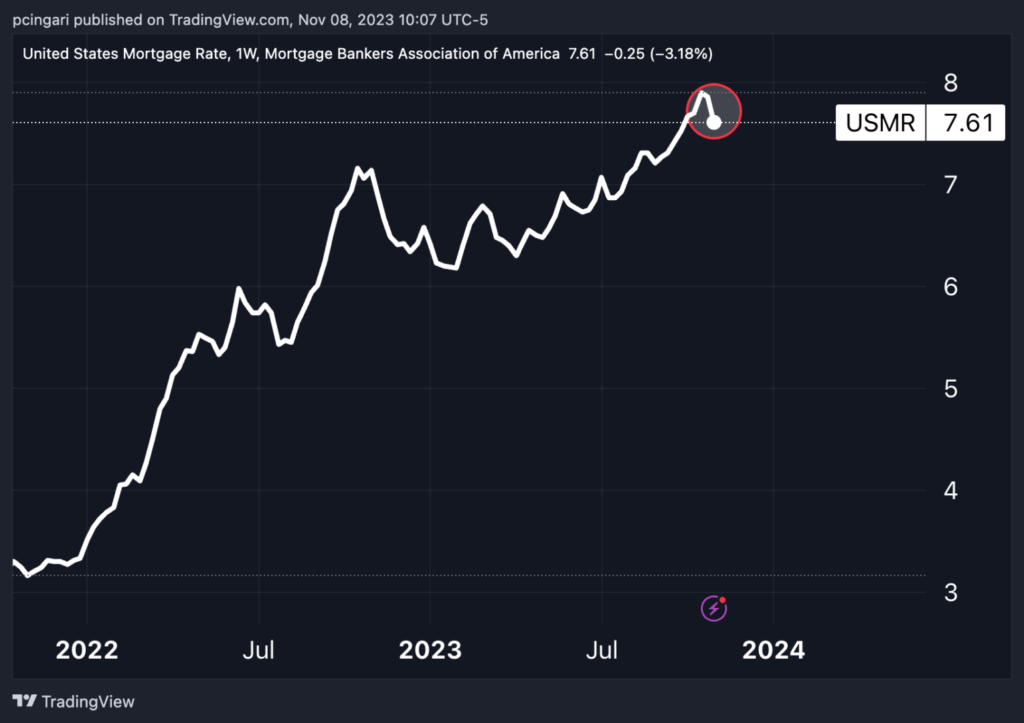Zinger Key Points
- Mortgage applications increased by 2.5% for the week ending Nov. 3, while 30-year fixed rates fell 25 basis points to 7.61%.
- The improvement coincided with a dovish Fed meeting and a sharp reduction in US Treasury yields.
- Feel unsure about the market’s next move? Copy trade alerts from Matt Maley—a Wall Street veteran who consistently finds profits in volatile markets. Claim your 7-day free trial now.
The mortgage market seems to find the first glimmers of light at the end of a long tunnel.
What Happened: The Mortgage Bankers Association (MBA) announced Wednesday that mortgage applications increased by 2.5% for the week ending Nov. 3, snapping three straight weeks of decreases.
A rise in mortgage activity coincided with a substantial drop in U.S. Treasury yields as markets assessed the duration of the Federal Reserve’s restrictive stance and buyers’ willingness to accept loans with extremely high-interest rates.
The 30-year fixed rate on mortgages averaged 7.61% in the most recent week. That’s a decline of 25 basis points from the previous week’s average. This marked the steepest weekly fall since July 2022.
"Last week's decrease in rates was driven by the U.S. Treasury's issuance update, the Fed striking a dovish tone in the November FOMC statement, and data indicating a slower job market,” said Joel Kan, MBA's Vice president and deputy chief economist.
Real estate stocks, as tracked by the Real Estate Select Sector SPDR Fund XLRE, were up 0.6% on Wednesday as of 10:00 a.m. in New York. They outperformed all other sectors, except for the Technology Select Sector SPDR Fund XLK.
Chart: Mortgage Rates Slightly Ease From Peak

Why It Matters: Last week, the U.S. Treasury revealed a drop in its quarterly borrowing forecast to $776 billion. That’s down from the prior estimate of $852 billion.
The Federal Reserve decided to keep interest rates steady. It also stressed the importance of acting cautiously given that interest rates are now restrictive. Powell also acknowledged progress on inflation. While he didn’t lock the door to another rate rise, markets read his words as dovish.
Over the past week, 30-year Treasury rates have fallen from 5.10% to 4.70%. During the same time period, 10-year note yields have declined from 4.94% to 4.55%.
Popular exchange-traded funds that invest in U.S. Treasuries have risen. The iShares 20+ Year Treasury Bond ETF TLT and the US 10-Year Treasury Note ETF UTEN are up 5.5% and 2.5%, respectively.
Read Now: Complete Guide To Real Estate Investing
Edge Rankings
Price Trend
© 2025 Benzinga.com. Benzinga does not provide investment advice. All rights reserved.
Trade confidently with insights and alerts from analyst ratings, free reports and breaking news that affects the stocks you care about.